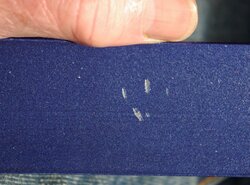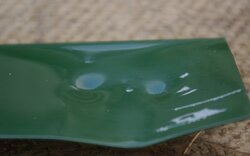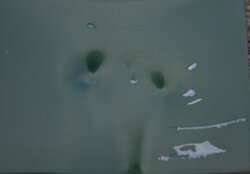Illaveago
Guru
- Location
- Chippenham,Wiltshire.
A little while ago I was asked how to get a paint finish that would be a bit more resilliant to knocks. I have like many other people I assume have painted their bikes only to have large chips fall off from the slightest of knocks.
I thought I'd ave a go and do a bit of experimenting.
I carried out 2 tests on two pieces of steel. One piece was a piece of angle iron the other was on a piece of sheet steel. The angle iron was rubbed down to key the surface slightly, cleaned with brush cleaner and sprayed with a coat of Upol Etch Primer. Once dry I sprayed a couple of coats of aerosol base coat and then a couple of coats of acrylic lacquer once that had dried.
The sheet steel was treated slightly differently in that I gave it a couple of coats
of primer which I flatted back slightly. I then applied 4 coats of aerosol cellulose paint and allowed that to dry.
Both pieces were given a further process of warming once all of the paint smell had gone.
I subjected both samples to hammer blow treatment. the sheet steel I also tried using a wood chisel to scratch test it.
I think that the paint stood up quite well considering the treatment I gave it.
I thought I'd ave a go and do a bit of experimenting.
I carried out 2 tests on two pieces of steel. One piece was a piece of angle iron the other was on a piece of sheet steel. The angle iron was rubbed down to key the surface slightly, cleaned with brush cleaner and sprayed with a coat of Upol Etch Primer. Once dry I sprayed a couple of coats of aerosol base coat and then a couple of coats of acrylic lacquer once that had dried.
The sheet steel was treated slightly differently in that I gave it a couple of coats
of primer which I flatted back slightly. I then applied 4 coats of aerosol cellulose paint and allowed that to dry.
Both pieces were given a further process of warming once all of the paint smell had gone.
I subjected both samples to hammer blow treatment. the sheet steel I also tried using a wood chisel to scratch test it.
I think that the paint stood up quite well considering the treatment I gave it.



